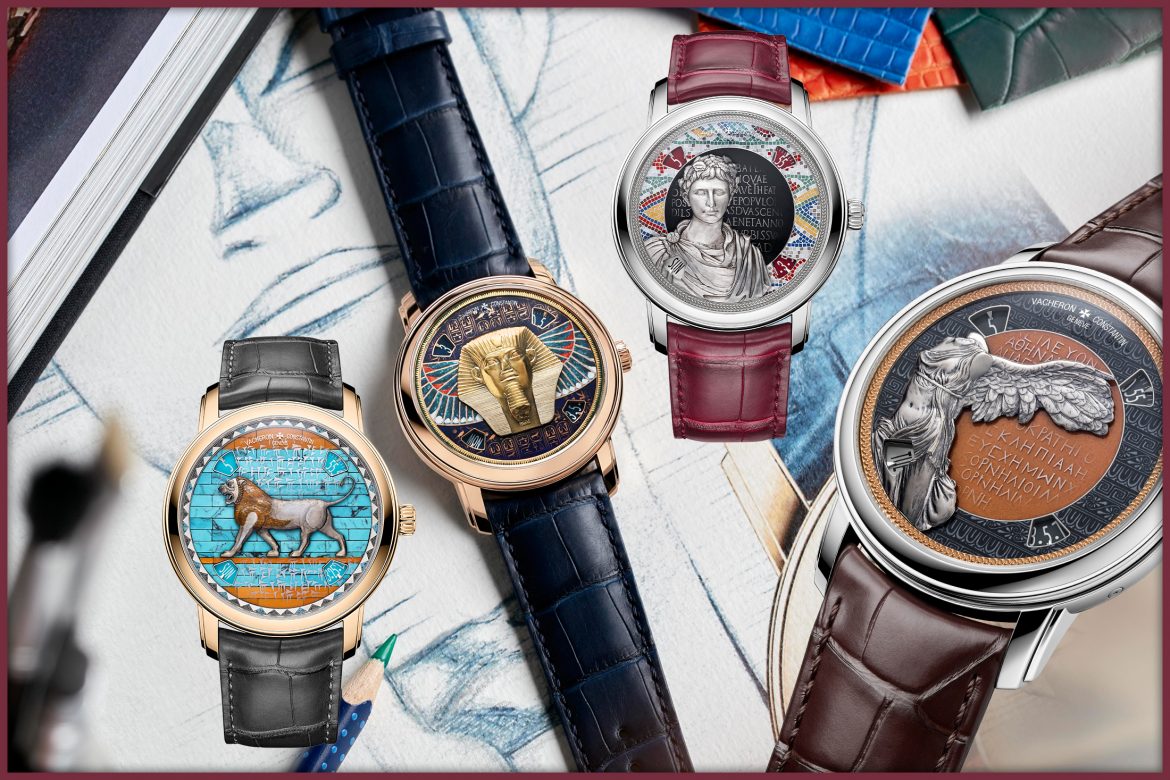Vacheron Constantin and the Louvre museum partner up for a grand new series of Métiers d’Art.
Swiss luxury watchmaker Vacheron Constantin and the historic Louvre museum in Paris have shared a long-standing simpatico relationship in perfect keeping with their respective dedication to celebrating artistic beauty and culture.
And the fruits of this partnership have clearly reflected this commitment – in 2019, Vacheron Constantin supported the restoration of the clock named La Création du Monde, a masterpiece of 18th century precision horology presented to King Louis XV in 1754. The Maison also participated in a recent Louvre auction by offering a single-piece edition Les Cabinotiers, whose dial was to reproduce in enamel an artwork selected by the buyer.
The two grand institutions come together once more for a new series of Métiers d’Art, and fittingly so – a collection of exquisitely made watches showcasing exceptional craftsmanship, paying tribute to the great civilisations of Antiquity.
Four masterpieces have been selected from the museum, each representing one of the four great eras – the Golden Age of Ancient Egypt, the Persian Empire of Darius the Great, the Hellenistic period of Ancient Greece, and the rise to power of the first Roman emperor Augustus.
Grand Sphinx de Tanis – the Ancient Egyptian Empire (2035-1680 BC)

A royal symbol, the sphinx is a hybrid comprising the body of a recumbent lion and a human head wearing the Nemes – the royal headdress par excellence – as well as the beard worn only by sovereigns.
Lion de Darius – the Persian Empire of Achaemenids (559-330 BC)

The Frieze of Lions, a glazed brick decoration, was located in the first courtyard of the palace of Darius the Great in Susa, the capital of the Persian Achaemenid Empire in southwestern Iran.
Victoire de Samothrace – Hellenistic Greece of the Antigonid dynasty (277-168BC)

This statue of Victory, a winged goddess resting on the prow of a warship, was discovered in 1863 on the island of Samothrace in the northern Aegean Sea. Excavated from a sanctuary dedicated to the Great Gods, who were widely worshipped throughout the Greek world, it depicts an offering linked to a naval victory.
Buste d’Auguste – the Roman Empire of the Julio-Claudians (27 BC – 68 AD)
This bust of Octavian Augustus, the adopted son of Caesar, represents him crowned with an oak wreath, a distinction awarded him by a Senate decision in 27 BC, when he became the principate or first citizen of Rome.

Each of these great civilisations is represented by a major artistic work drawn from some of the Louvre’s masterpieces. The project involved a real challenge for craft makers that required meticulous work in miniature, on a less than 40 mm-diameter dial, featuring ornamentation inspired by the decorative arts of the corresponding period, embellished with written elements.
The choice of techniques, the rare talents required to implement them, as well as the original composition of these timepieces converge to offer a fascinating watchmaking spectacle, commensurate with these great moments in history.
Images courtesy of Vacheron Constantin, artwork by Curatedition. All rights reserved.
Related Links:
Vacheron Constantin “Exploring the Space Between”
Vacheron Constantin: Openworked Wonder
Vacheron Constantin: A Legacy of Understanding Women

